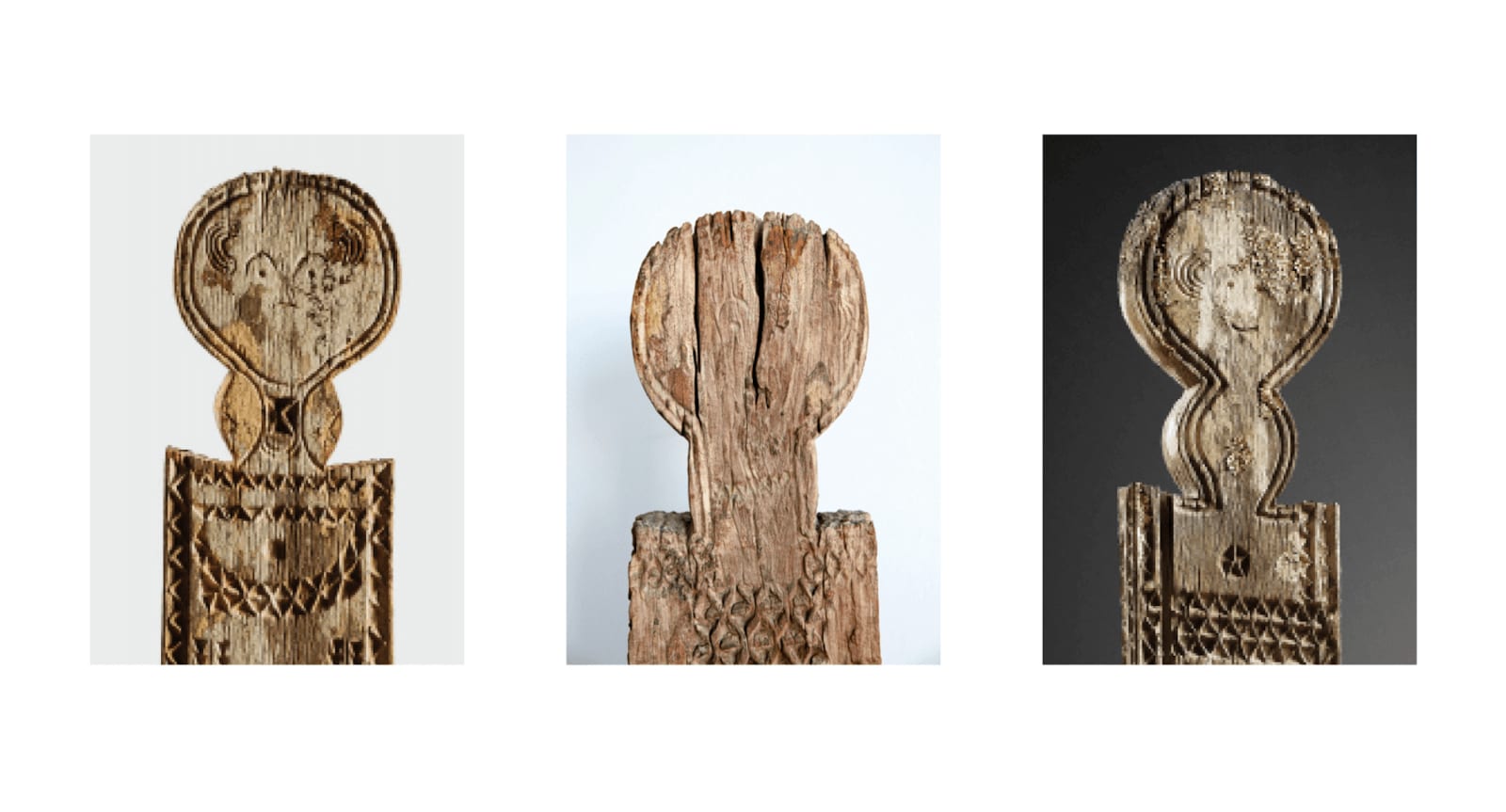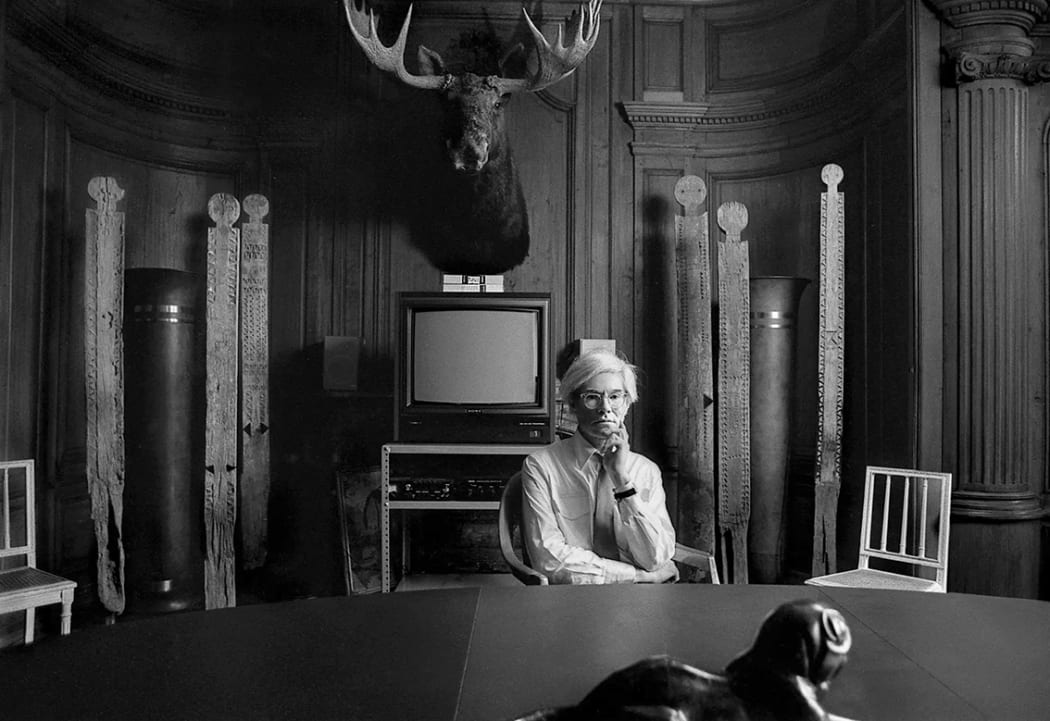
He did! In fact he had a collection of six Giryama funerary markers in the factory’s conference room! Our last exhibition “Manifestations” includes one of the very best Giryama grave markers.
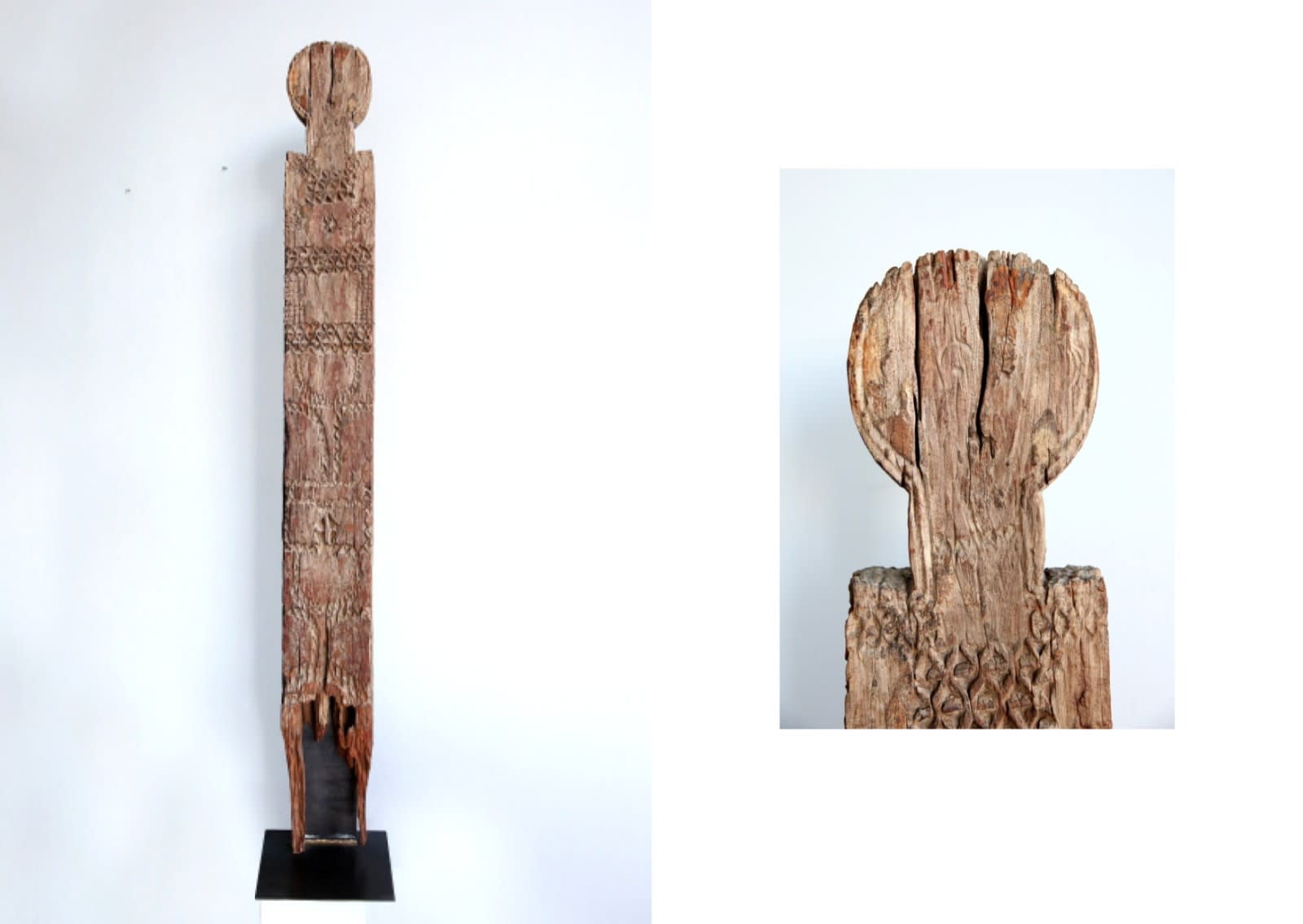
Grave post (“kigango”), Anonymous Giryama artist. Early 20th century, Kenya. Wood, 182 cm. Provenance: Acquired in situ by Jean-Pierre Jernander (1939-2015), Brussels, Belgium, in 1974. Private collection, Belgium. Private Collection, Antwerp.
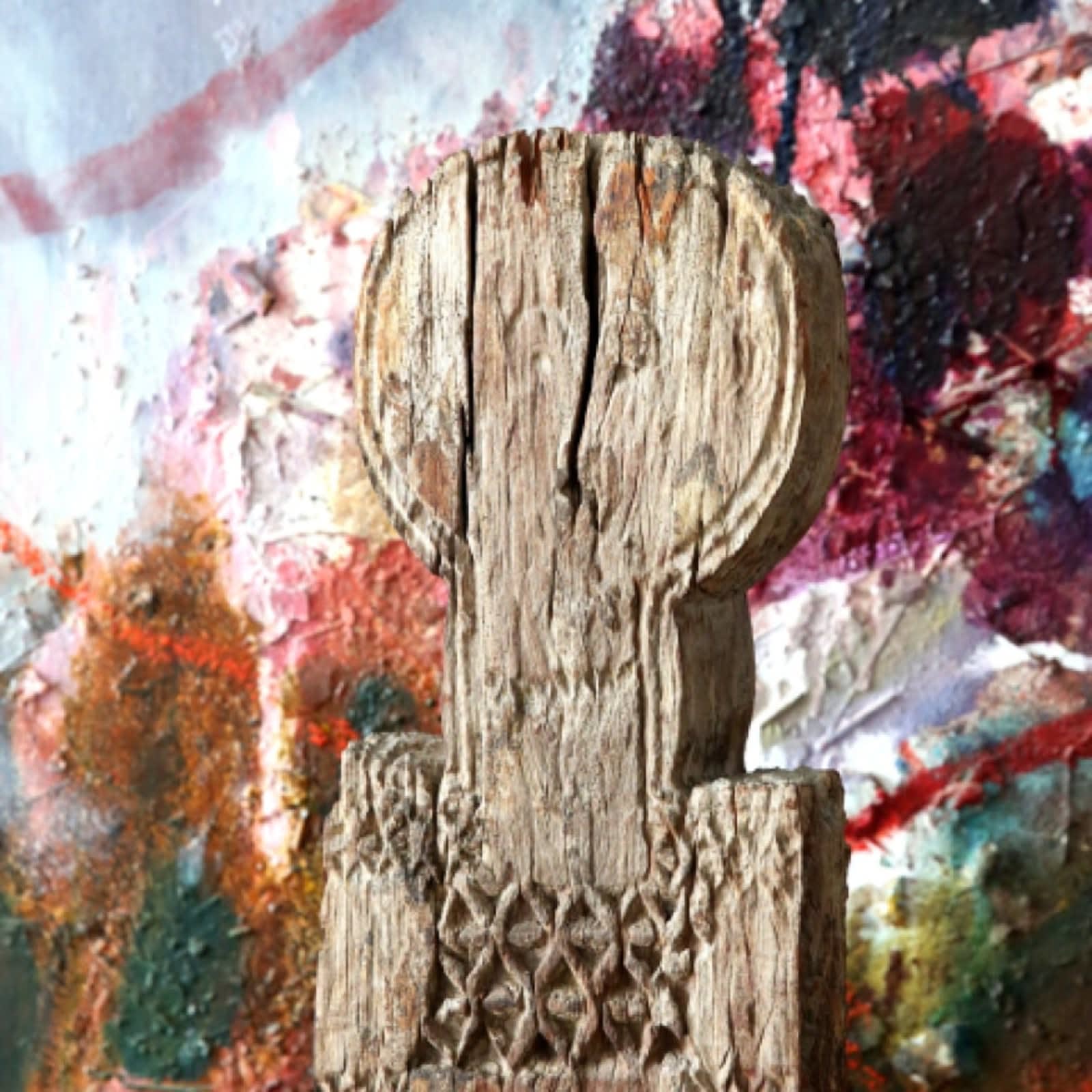
The Giryama people of the Kenyan coast are known for their long-standing tradition of carved wooden funeral posts. “Vigango” were carved and installed exclusively by and for members of the Gohu society, a semi-secret, fraternal organization whose members were male elders who had been elected for their wisdom and experience, and were able to pay the substantial membership fees. Shortly following the death of a Gohu member, his family would commission the local Gohu society to carve a kigango in his honor and host a feast to accompany its installation. These grave posts then served a number of functions. Beside their primary function as grave markers, they also fulfilled an important role as mediators between the world of the living and the ancestral realm.
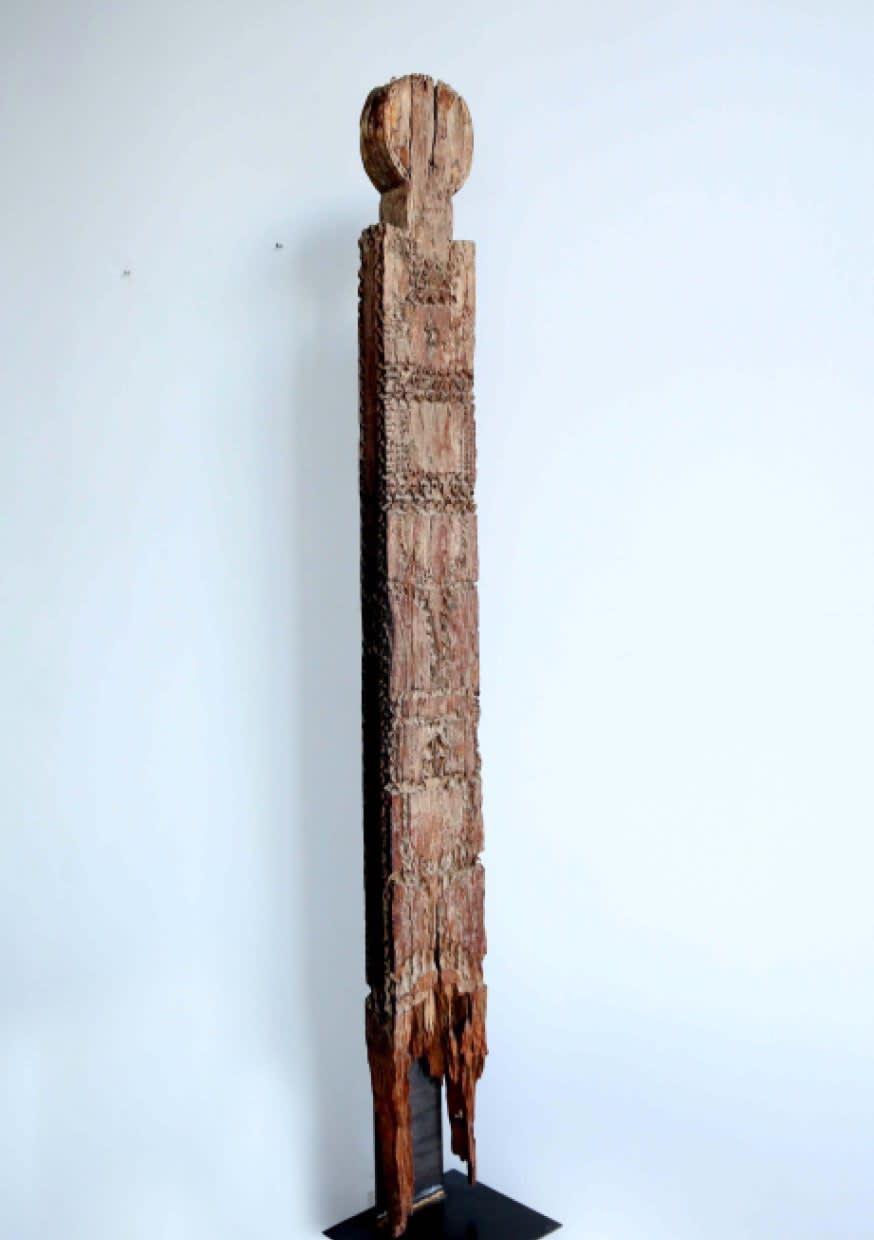
“Vigango” honored the power and presence of the ancestor spirits (known as koma). They served as a locus to which an ancestor’s spirit could be called to be propitiated and asked to secure the favorable disposition of more powerful spirits to undertakings such as a risky journey or the cure of an illness. At the base of each “kigango” a cup (often made of a coconut shell) was placed, into which members of the deceased’s family put small offerings of palm-wine, food, snuff, etc. when they wished to gain the attention and help of their representative in the ancestor world. The iconography of these grave posts is schematic and not intended to be naturalistic. They are characterized by an abstract rendering of the head and facial features combined with a symmetric handling of simple geometric decoration on the pole-like body. The head portion of the post takes the shape of a circle and includes simplified representations of human features such as eyes, a nose, and occasionally a mouth. The rectangular neck connects the head to the long rectangular torso. The arms and lower limbs are never represented.
As the “kigango” was intended to stand erect at the head of a grave for a long time, its body was trimmed down to a narrow, flat form that could penetrate the earth sufficiently for it to be held securely. This stela-like body fulfilled an aesthetic function as it served as a field of decoration. Its front surface was divided into carefully planned, symmetrical frames containing an assortment of dentate bands, concentric circles, serpentine lines, and lozenges. The exact significance of these patterns is not known; they likely have multiple interpretations. The back of the figure was only minimally decorated, in a style identical to that on the front. The geometrical designs originally were filled with red ocher, white ash or charcoal, all of these mixed with the latex of euphoria to a texture with hardened like enamel, and thus impairing an inlaid effect.
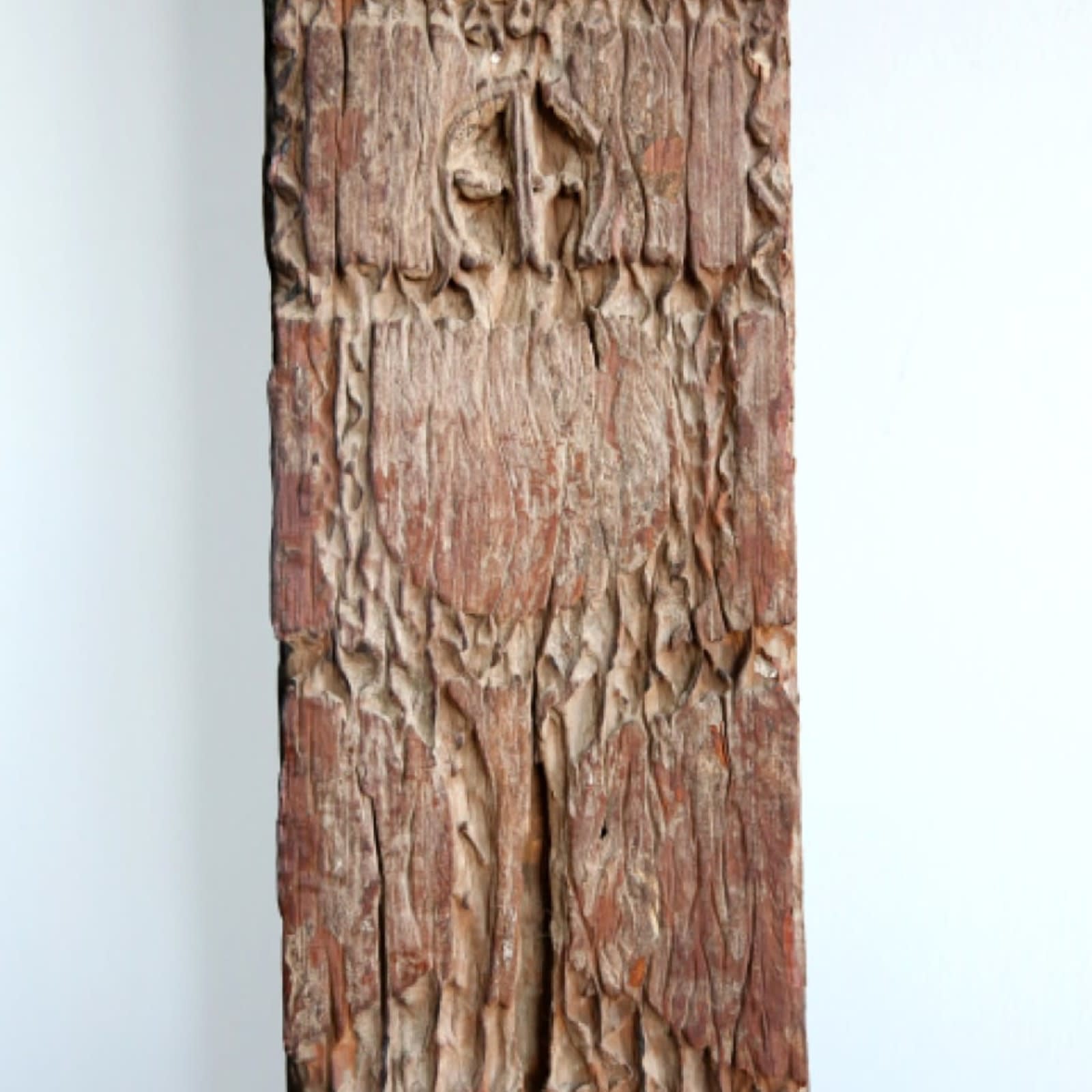
Such a cloisonné-like technique is seldomly encountered in classical African art. It should be noted these grave markers were not permanent memorials. They were only taken care of as long as the commemorated individual was remembered. “Vigango” thus came to be abandoned within a few generations of their installation. Carved of nzizi wood, an extremely hard wood resistant to insect deterioration, these grave markers were traditionally allowed to stand until they naturally decomposed. “Vigango” could only be moved once and were then left behind as the village relocated a second time. They were substituted at subsequent village locations by a replacement post known as a “kibao” (plural: “vibao”), thereby transferring away whatever spiritual power was thought to remain from the original “kigango”. This was a natural result of the Giryama’s centuries old practice of slash and burn agriculture and, subsequently, the periodic changing of village locations. Burn marks can be observed at the lower half of this post, and the wood’s deep erosion indicates its old age.
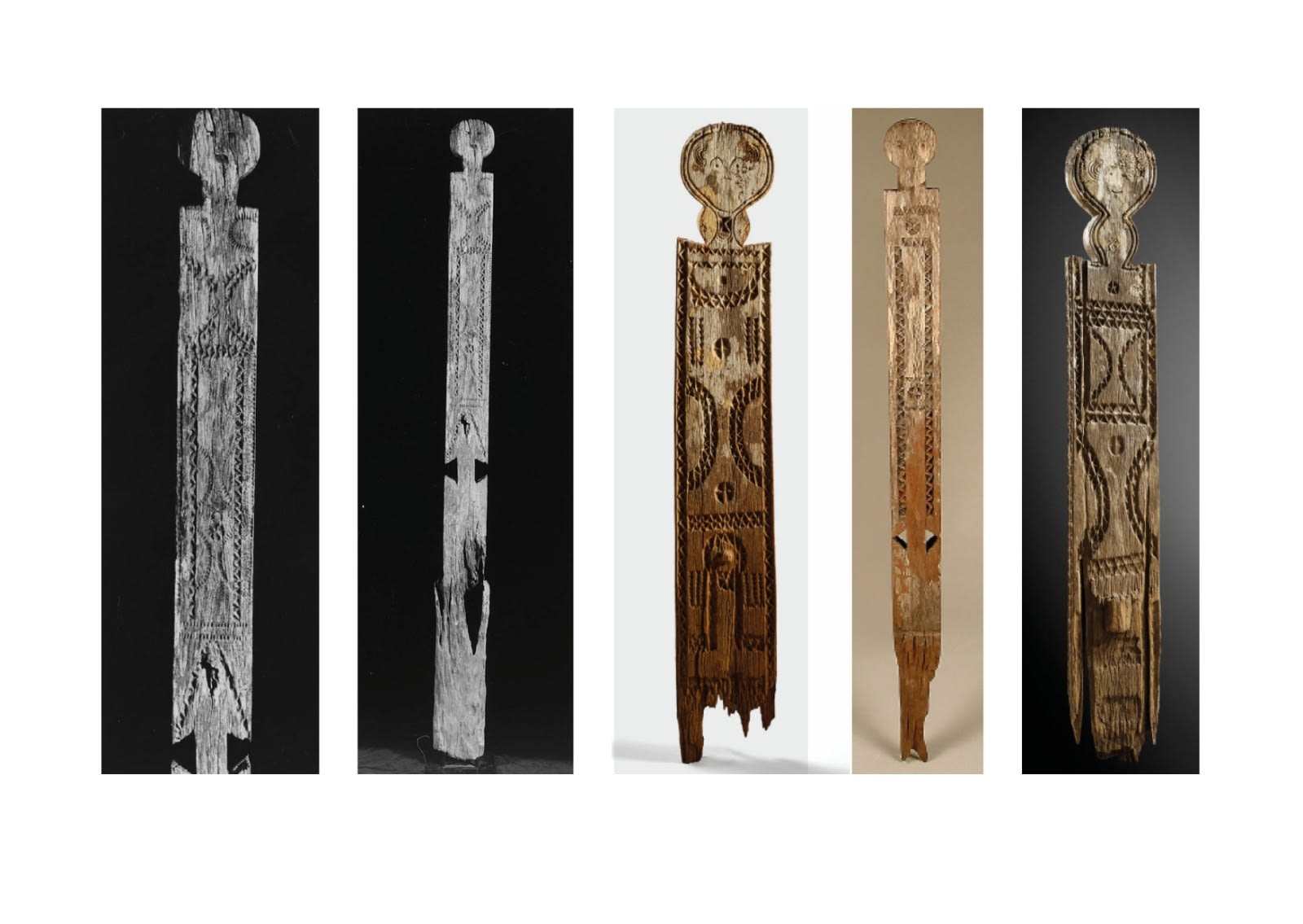
From left to right: 1-2. Collection Royal Museum for Central Africa, Tervuren, Belgium (inv. #EO.1979.15.88). Acquired from Roland Gillion, collected by Jean-Pierre Jernander. 3. Private Collection (Christie’s, Paris, 2 December 2021, lot 14). Collected by Jean-Pierre Jernander, early 1970s. 4. Collection National Museum of African Art, Smithsonian Institution, Washington, D.C., USA (inv. no. # 79-20-1). 5. Private Collection (Sotheby’s, Paris, 8 June 2007, lot 179). Collected by Jean-Pierre Jernander, early 1970s.
Posts 3 & 5, also acquired in situ by Jean-Pierre Jernander in the early 1970s, were sculpted by the same master carver. His work can be identified by the very particular treatment of the ears: as 4 paralel C-shaped lines - we therefore decided to give this anonymous artist the name “The Giryama master of the C-shaped ears.
